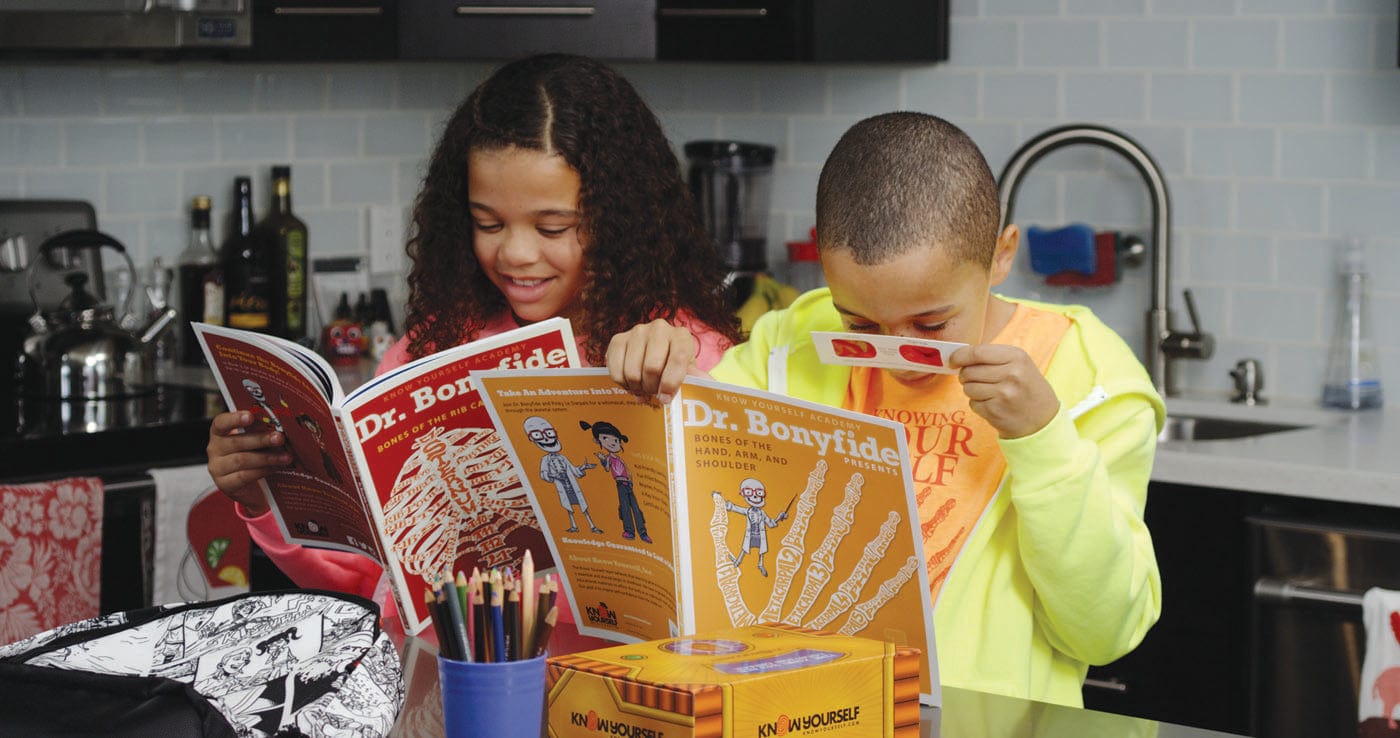
In much of North America, wintertime can create both beautiful and challenging conditions for sports. Instead of training at home until warmer weather arrives, some athletes choose to work with the ice, snow, and cold to compete. If you watch any of these amazing athletes in action (like the Winter Olympics coming up in February)—or if you are one yourself—you might wonder: do they have some sort of anatomical superpowers the rest of us don’t have? While we might not go that far, here’s a rundown of some pretty fancy tricks they have up their (insulated) sleeves.
They practice mind control!
If you’ve ever experienced motion sickness, you know spinning in circles is likely to make you feel disoriented, nauseous, dizzy, and a whole host of other unpleasant symptoms. You certainly won’t feel like completing a 4 minute performance that involves jumping in the air, skating backwards, and even more spinning, though this is precisely what figure skaters do. So are they somehow immune to motion sickness? The answer is:not exactly. Motion sickness is caused when your brain gets confused about whether you’re moving or not.
For instance, while in a moving car, your eyes watching scenery pass and the swishing of the fluid in your inner ear tell your brain you are moving, but your joints and muscles tell it that you’re sitting still. Similarly, if you’re spinning around in one place and stop, your whole body will tell your brain you’renot moving—except your inner ear fluid will keep swirling, which makes it seem like you are—these mixed messages result in your brain making you feel sick. One trick skaters use to help with the disorientation is to fix their eyes in one place when they stop spinning. This helps by giving their brain one more piece of information that says, “I’ve stopped moving”—even if their inner ears are claiming that they still are. They also train their brains to “tune out” messages they get from the inner ear by practicing spins over and over, starting small and then working up to multiple turns in a row (similar techniques are even used by astronauts to prepare for the jarring sensations of space flight!). In the Scientific Spotlight on sensory sensitivity, we learned that our brains use gating to help us from being overwhelmed by the sensations we feel all the time—skaters are training their brains to use this same trick to ignore the input from their inner ear.
Similarly, our brains and muscles work together to keep us in balance. Our natural instinct when we feel like we’re falling is to correct ourselves—for instance, when most of us step onto an ice skating rink, we feel like we’re falling backwards, so we tend to throw ourselves forward in an attempt to regain our balance. Experienced speed skaters, figure skaters, and ice hockey players, however, have calmed those reflexes so that they can smoothly skate, twirl, and even jump on the ice without their brain telling their muscles that they need to correct themselves all the time. Neuroscientists believe that every time a skater practices, they quiet the brain’s impulses a little more until it is reprogrammed to recognize those movements as intentional and not falling. You can imagine other winter athletes, such as skiers, snowboarders, lugers, and bobsledders would all have a similar need to reprogram their brains to adjust to demands of their sport.
They’re strong on the inside.
Like its benefits to muscle health, exercise is also good for your bones. According to the National Institutes of Health, weight-bearing exercise (like walking, jogging, and dancing) are the best for strengthening bones. One way to estimate this strength is by testing yourbone mineral density (BMD). Winter athletes in general have higher BMD than healthy non-athletes for their whole body and specifically, alpine (downhill) skiers and speed skaters have higher BMD in their hips joints. Figure skaters have higher bone density in their pelvic bones, legs, and heels—in fact, their landing foot (which experiences greater impacts) has a BMD up to 11% higher than their takeoff foot.
They’re on #TeamPhysics!
Winter athletes use gravity to their advantage. Lugers tend to have long arms to launch themselves down the track and are taller than average, with extra mass helping to propel the sled to the finish. On the other hand, figure skaters tend to be shorter than average height. The balancing point of your body—where you don’t feel like you are falling to either side, forward or backward—is called yourcenter of gravity. It’s a concept rather than something you can see, but it’s usually thought of as near to your belly button. A shorter height means a center of gravity that’s closer to the ground, which means it’s easier to balance and you’re less likely to fall. That doesn’t mean someone taller can’t be a figure skater, it can just make it a little easier to balance if you’re closer to the ground.
They have limits, too
According to the University of Kent, exercise-induced asthma is the most common health concern for winter athletes. It’s a two-part problem: the cold, dry air causes airways to become dry and swollen—making the passageways more narrow than normal. Then the strenuous activity causes the athlete to take breaths more frequently. This combination can make you cough, wheeze, and gasp for breath. Not only that, it can hurt athletic performance. The medically preferred term isexercise-induced bronchoconstriction (say it like this: bronk-oh-con-STRIK-shun), because while it does involve narrowing of the airways, it’s not a primary cause of asthma. You can review our discussion of asthma in the Ask Dr. B. for the respiratory system. While exercise-induced bronchoconstriction typically affects up to 15% of the population, nearly 50% of winter athletes suffer from it, with the highest rates seen in speed skaters. Athletes can be treated with therapies used for other types of asthma, like inhalers, and by wearing face masks that warm and moisturize the air they breathe.
Winter athletes give the appearance of superhuman strength, speed, and precision against a beautifully frozen backdrop. Whether you love getting out in the cold yourself, or would prefer to watch from your couch with a mug of hot cocoa, you can now say you know the secrets to their snowy super-skills.









Leave a comment (all fields required)